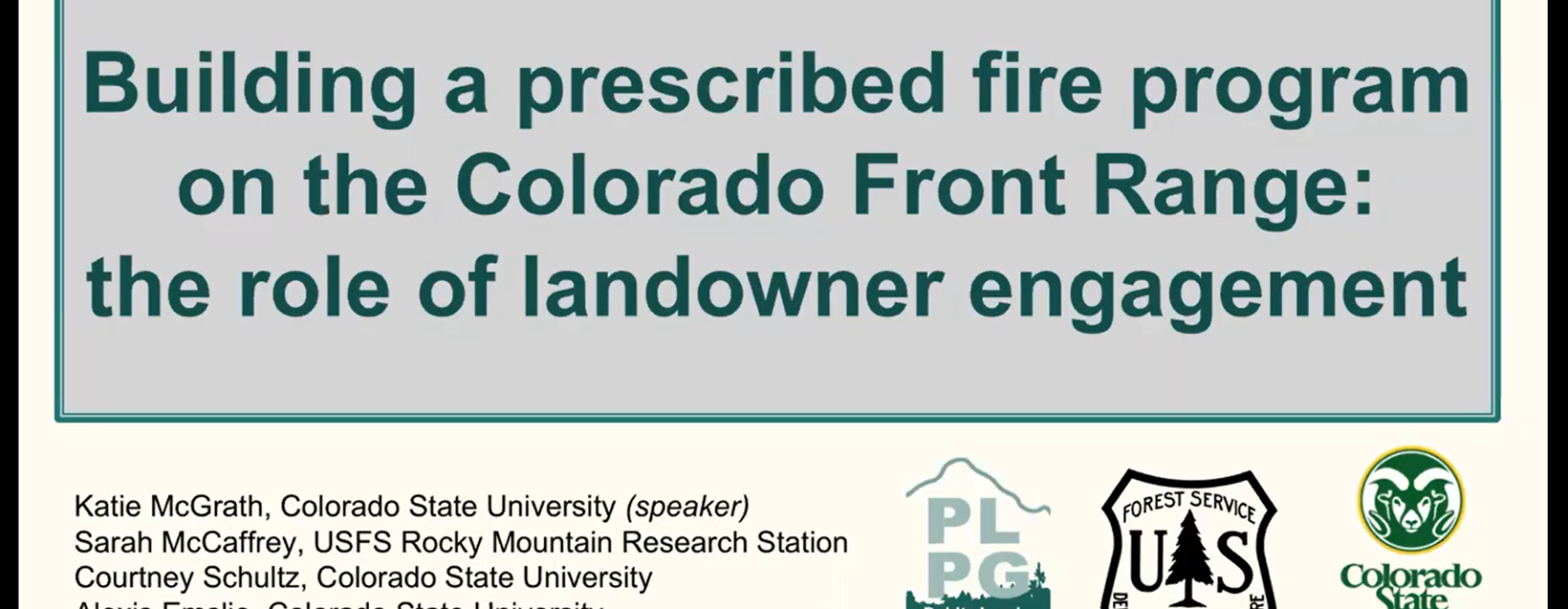Presenter: Katie McGrath, Colorado State University
Despite recognition of the value of prescribed fire in scientific literature and policy, a number of factors impede its widespread implementation in the United States. Social acceptance of prescribed fire is a key factor, making consistent and effective outreach an important part of efforts to increase prescribed fire implementation. The Arapaho-Roosevelt National Forest has set a goal to increase the level of prescribed burning, on its land and at a larger landscape level when possible. As part of this effort it has been working to improve active stakeholder involvement and education about forest restoration planning and implementation, with special attention paid to those who might be most directly impacted by future prescribed fires. Our case study on the Canyon Lakes Ranger District of the Arapaho-Roosevelt National Forest analyzes: strategies the USFS and its partners have used to communicate to landowners and meet their goals; challenges and benefits experienced on both the giving and receiving ends of outreach; and how outreach has been perceived by its recipients. Preliminary findings suggest that landowners are most satisfied with accessible, personalized outreach and experiencing successful projects locally, while managers stressed the importance of collaboration in building capacity, trust, and achieving objectives.

